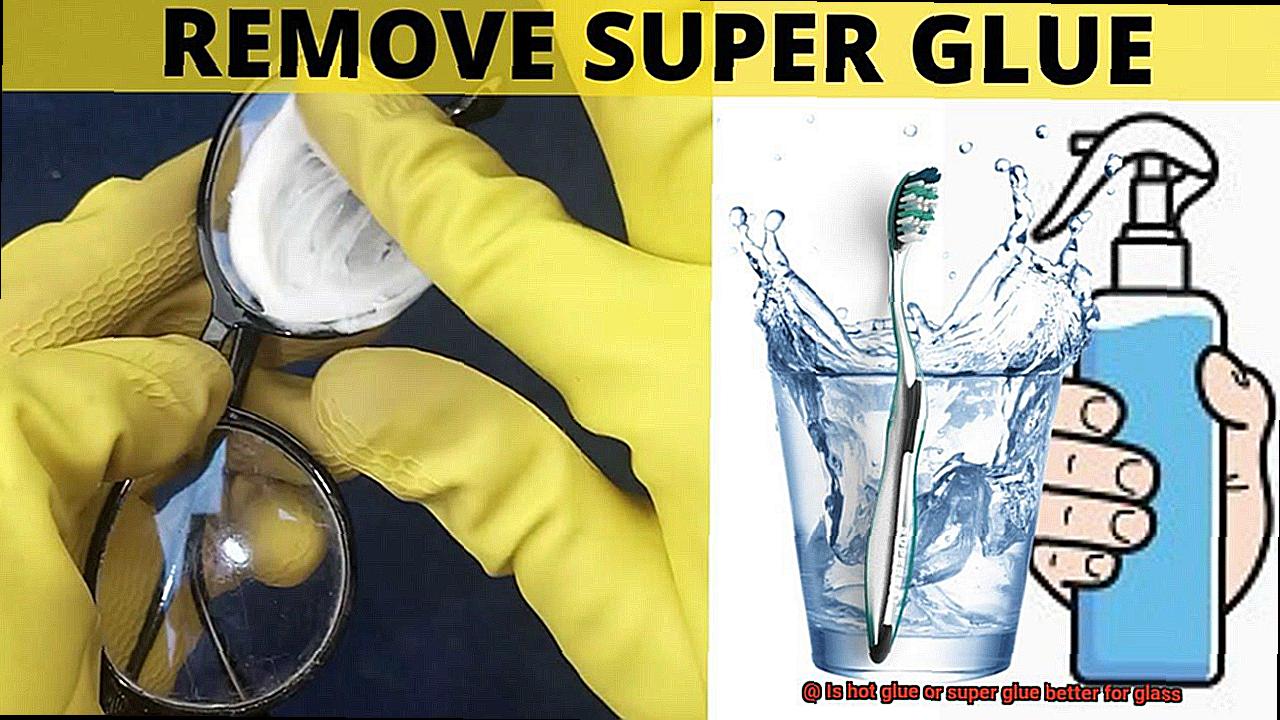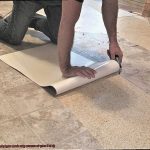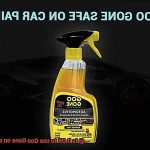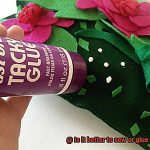When it comes to working with glass, finding the perfect adhesive is like discovering buried treasure. It’s a make-or-break decision that can either make your project shine or shatter into a million tiny pieces. That’s why we’re here to settle the age-old debate: hot glue or super glue for glass?
Hot glue, the speedy superhero of adhesives, has been a trusted sidekick for crafters and DIY enthusiasts worldwide. Its versatility and lightning-fast bonding abilities make it an enticing option for glass projects. But don’t count out super glue just yet – this legendary adhesive has earned its stripes in countless industries, thanks to its unyielding strength.
Join us on this thrilling journey as we uncover the strengths and weaknesses of both hot glue and super glue when it comes to taming the wild beast known as glass. From their gripping power to their ability to withstand extreme temperatures, we’ll provide you with insider knowledge that will leave you feeling like an adhesive aficionado.
So grab your lab coat (or apron) and prepare to dive headfirst into the mesmerizing world of glass bonding. Whether you’re a DIY daredevil or a professional seeking top-notch solutions, this blog post is your ultimate guidebook.
Are you ready? Let’s embark on this epic battle between hot glue and super glue for the title of Glass Bonding Champion.
What is Hot Glue?
Contents
Hot glue, also known as hot melt adhesive, is a versatile and easy-to-use adhesive that is commonly used in crafts, DIY projects, and even industrial applications. It is made from a thermoplastic polymer called ethylene-vinyl acetate (EVA), which gives it its adhesive properties.
Hot glue comes in the form of cylindrical sticks or pellets that are loaded into a hot glue gun. The glue gun heats up the glue and melts it into a liquid state. The melted glue is then dispensed through a nozzle, allowing the user to apply it directly onto the surface they want to bond. The glue cools down and solidifies within seconds, creating a strong bond between the materials.
Here are some key features and uses of hot glue:
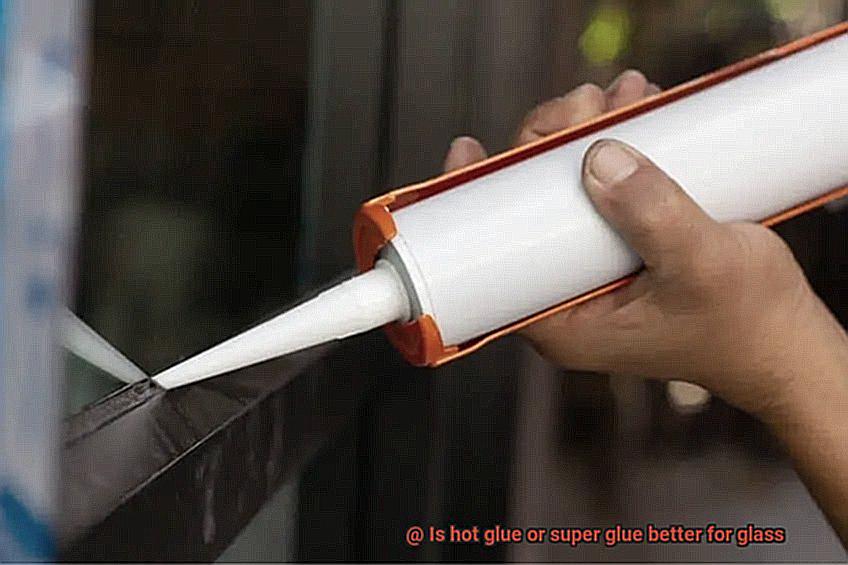
- Versatility: Hot glue can bond a wide range of materials, including fabric, wood, plastic, metal, and glass. This makes it suitable for various projects and applications.
- Quick bonding: Hot glue adheres quickly to surfaces, providing an instant bond. This is especially useful for projects that require immediate bonding.
- Transparency: When dry, hot glue is usually transparent, making it ideal for applications where aesthetics are important.
- Flexibility: Once cooled and solidified, hot glue retains some flexibility. This allows it to absorb shocks and movements without cracking or breaking, making it suitable for applications where the bonded materials may undergo stress or movement.
- Repositionability: Hot glue takes a few seconds to cool down and solidify, giving the user a short window of time to adjust or reposition the materials before the bond becomes permanent.
While hot glue offers many advantages, it may not be suitable for all applications. It has a relatively low shear strength and may not hold up well under heavy loads or constant stress. Additionally, hot glue is sensitive to temperature changes and may soften or melt when exposed to high temperatures.
What is Super Glue?
Super glue, also known as cyanoacrylate adhesive, is a remarkable and fast-acting adhesive that forms an incredibly strong bond between surfaces almost instantly upon contact. This powerful adhesive has a fascinating science behind it. Let’s delve deeper into the key points to understand about super glue.
Firstly, it is important to know that super glue was discovered in 1942 by Dr. Harry Coover while working on a project for the war effort. However, it wasn’t until the 1950s that super glue was commercially introduced and gained popularity. Since then, it has become a household name for its exceptional bonding properties.
The secret behind super glue’s effectiveness lies in its main ingredient: cyanoacrylate. It is an acrylic resin that undergoes rapid polymerization when exposed to moisture in the air. This process causes the liquid-like substance to transform into a solid material, creating a strong bond that is difficult to break.
What makes super glue truly versatile is its compatibility with a wide range of materials. It can bond glass, metal, plastic, ceramic, and even certain types of wood. This versatility has made it a popular choice for various applications, from repairing broken objects to engaging in intricate crafting projects.
Once fully cured, super glue forms an incredibly strong and durable bond that can withstand considerable stress and strain. However, it is important to note that the strength of the bond may vary depending on the brand and formulation of the super glue.
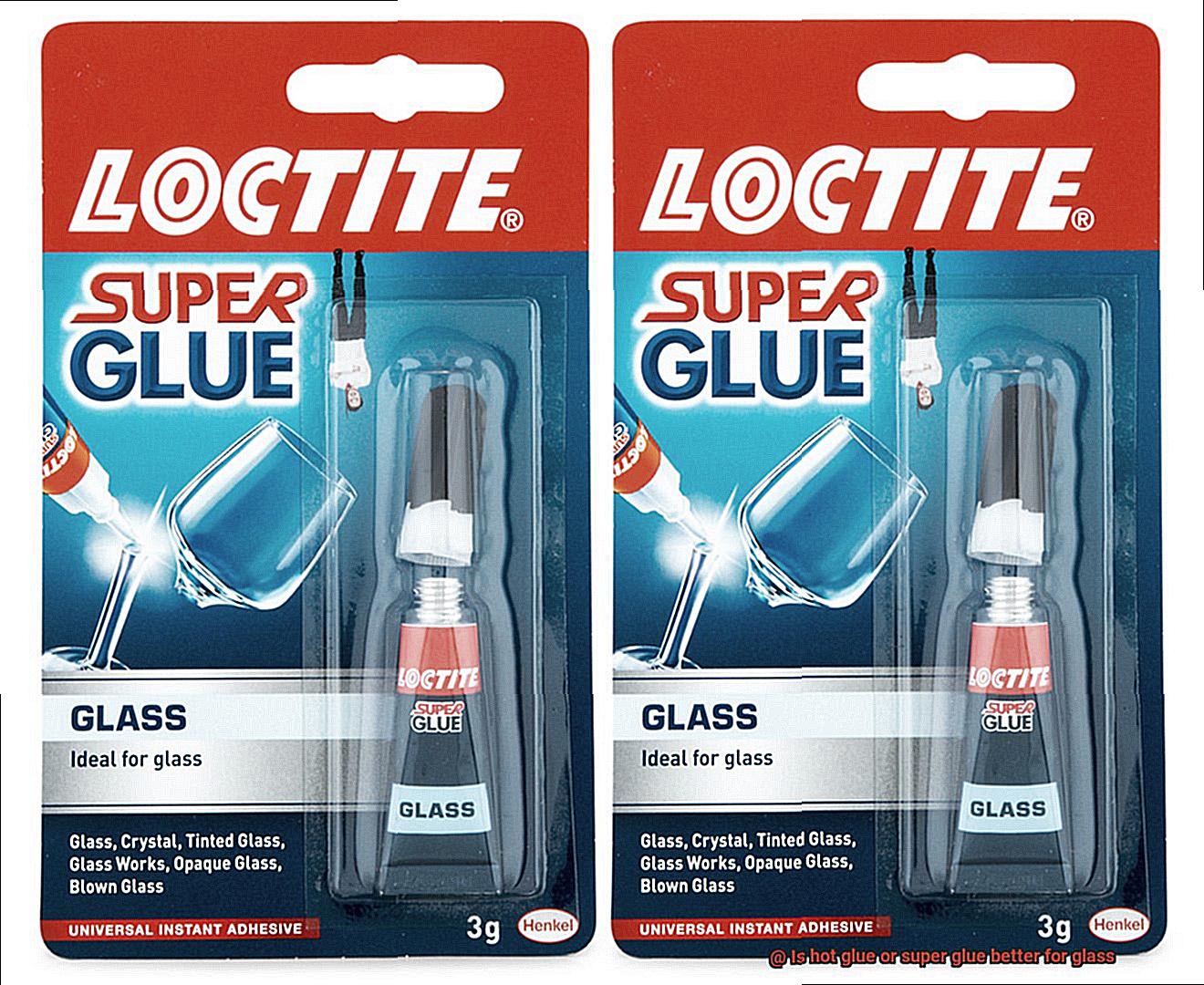
One of the unique features of super glue is that it dries clear, making it ideal for use on transparent or translucent materials like glass. The bond remains virtually invisible once the glue has set, ensuring a seamless finish.
However, it is crucial to be aware of super glue’s limitations. Over time, the cured adhesive can become brittle and may crack or break under certain conditions. Additionally, it may not be suitable for applications requiring flexibility or resistance to extreme temperatures.
Advantages of Hot Glue for Glass Bonding
Hot glue, also known as hot melt adhesive, is a versatile and widely-used adhesive for glass bonding. It offers several advantages that make it a popular choice among professionals and DIY enthusiasts. Here are some key benefits of using hot glue for glass bonding:
- Versatility: Hot glue can bond various types of glass, including clear glass, colored glass, tempered glass, and even delicate glass objects such as stained glass. It can also be used to bond glass to other materials like wood, plastic, and metal. Its versatility makes it a go-to adhesive for a wide range of glass bonding applications.
- Quick bonding: One of the notable advantages of hot glue is its fast bonding time. Once applied, hot glue typically sets within seconds or minutes, depending on the specific formulation and temperature. This rapid bonding time allows for immediate handling and reduces waiting time, making it ideal for projects that require quick turnaround times.
- Strong bond strength: Despite its quick setting time, hot glue creates a strong and durable bond between glass surfaces. When properly applied, it forms a reliable connection that can withstand moderate stress and impact. This ensures that the bonded glass objects remain securely in place.
- Ease of application: Hot glue is relatively easy to apply, even for beginners. It is commonly available in the form of cylindrical sticks that can be loaded into a hot glue gun. The gun heats the glue stick, melting it into a liquid state which can then be applied directly onto the glass surface using controlled pressure. The simplicity of the application process makes hot glue a popular choice for DIY enthusiasts.
- Reversibility: Unlike some other adhesives, hot glue offers a degree of reversibility. If needed, the bond created by hot glue can be softened or dissolved by applying heat to the glued joint. This allows for disassembly or repositioning of glass objects without causing significant damage or leaving behind residue.
- Wide availability: Hot glue is readily available in various forms and sizes, making it easily accessible for both professionals and hobbyists. It can be purchased from hardware stores, craft stores, and online retailers. Additionally, hot glue guns are affordable and widely used, further contributing to the accessibility of hot glue as a bonding option for glass.
Limitations of Hot Glue for Glass Bonding
Hot glue, like any superhero, has its limitations. When it comes to bonding glass, it’s important to be aware of these limitations. Here are some factors to consider:
- Temperature: Hot glue is made from thermoplastic polymers that soften and melt when exposed to high temperatures. This means that if the bonded glass object is subjected to heat, such as from the sun in a parked car, the hot glue can soften or even melt, weakening or breaking the bond.
- Flexibility: Once cooled and hardened, hot glue becomes rigid and brittle. This can be problematic when bonding glass, which is also a relatively rigid material. Any movement or flexing of the bonded glass parts can stress the hot glue bond, leading to failure over time.
- Appearance: While hot glue generally dries clear, it can sometimes leave a cloudy or hazy appearance on the glass surface. This is not ideal for applications where a clear and seamless bond is required, such as in glass art or jewelry making.
- Moisture Resistance: Hot glue may perform well in dry environments, but exposure to moisture or water can weaken or break down the bond. This can be a concern for applications where the bonded glass may come into contact with water, such as in outdoor decorations or aquariums.
- Strength: Hot glue may not provide enough adhesive strength for heavy or load-bearing applications involving glass. Compared to other adhesives like epoxy or structural adhesives, hot glue’s adhesive strength is lower. For bonding large or heavy pieces of glass together, hot glue may not offer sufficient strength and durability.
Advantages of Super Glue for Glass Bonding
When it comes to bonding glass, super glue is a true superhero. Its exceptional bonding strength ensures a durable connection that can withstand everyday wear and tear as well as environmental factors. Whether you’re working on delicate glass art or repairing a broken window, super glue guarantees a long-lasting bond that will stand the test of time.
The application process for super glue is quick and easy, thanks to its precision applicator. You can apply the adhesive directly to the desired areas without any mess. And the best part? Super glue dries rapidly, typically within seconds to minutes, allowing you to complete your projects efficiently. No more waiting around for hours for the glue to dry.

Super glue’s versatility is another advantage. It’s not just effective for glass-to-glass bonding but also works well for joining glass to other materials such as metal, plastic, wood, or fabric. This makes it a convenient choice for various DIY projects or professional applications. Whether you’re fixing a broken glass table or creating a unique glass sculpture, super glue has got you covered.
In terms of aesthetics, super glue shines. Unlike some other adhesives that may leave visible marks or residue, super glue dries to form a clear and transparent bond on glass surfaces. This ensures that the beauty of your bonded glass remains intact, with no unsightly marks or discoloration.
Super glue is also resistant to moisture and heat, making it suitable for bonding glass in high-humidity environments or areas exposed to temperature fluctuations. You can trust that the bond will remain strong and reliable even in challenging conditions, such as in bathrooms or near heat sources.
Lastly, super glue has a long shelf life when stored properly. This means you can keep it on hand for future projects or occasional repairs, making it a cost-effective option for those who frequently work with glass. No need to worry about wasting unused adhesive.
Limitations of Super Glue for Glass Bonding
Super glue, also known as cyanoacrylate adhesive, is a popular choice for bonding glass due to its fast-drying and strong adhesion properties. However, it does have some limitations when it comes to bonding glass.
Firstly, super glue tends to lose its bond strength and become brittle when exposed to high temperatures. This can be problematic if the bonded glass object needs to endure heat or be placed in a hot environment. It’s important to consider the temperature requirements of your project and choose an adhesive that can withstand those conditions.
Secondly, super glue may not be suitable for bonding large or heavy glass objects. The adhesive strength of super glue may not be sufficient to hold the weight of such objects, leading to bond failure. In these cases, it’s recommended to use a more robust adhesive like epoxy resin.
Additionally, super glue has limited flexibility, which can be a disadvantage when bonding glass. Glass is a rigid material, and any movement or flexing can put stress on the bond line. If the bonded glass object experiences frequent vibrations or bending, the super glue bond may weaken or break over time.
Furthermore, some types of glass, such as borosilicate or tempered glass, have low surface energy and are more resistant to adhesive bonding. Super glue may struggle to create a strong bond with these types of glass. It’s important to consider the type of glass you’re working with and choose an adhesive specifically designed for that material.
Moreover, while super glue provides good resistance to moisture in general, prolonged exposure can weaken the bond. If the bonded glass object will be placed in a moist environment or submerged in water, it’s important to choose an adhesive that can withstand moisture.
Lastly, the application process of super glue requires precision and careful handling. Super glue is known for its fast-drying properties, which means there is little time for adjustment once the adhesive is applied. This can be challenging when working with delicate or intricate glass objects that require precise alignment. Careful handling and precision during application are essential to achieve a successful bond.
Steps to Successfully Use Super Glue on Glass
I have compiled a comprehensive guide to help you successfully use super glue on glass surfaces. Follow these steps, and you’ll achieve a strong and durable bond in no time.
Step 1: Prepare the surface
To ensure a successful bond, start by preparing the glass surface. Remove any dirt, dust, or oils by wiping the glass with a lint-free cloth. Consider using a glass cleaner if necessary. A clean surface is essential for proper adhesion.
Step 2: Protect yourself
Super glue is powerful stuff, so it’s important to protect yourself. Wear protective gloves while working with the glue to prevent any accidental skin contact or sticking mishaps. Safety first.
Step 3: Apply the glue
Now it’s time to apply the super glue. Start by applying a small amount to one of the surfaces you want to bond. Remember, a little goes a long way. Using too much glue can create a messy appearance and may not result in a proper bond.
Step 4: Press firmly
Once the glue is applied, quickly press the two surfaces together firmly. Hold them in place for a few seconds to allow the glue to bond properly. This step is crucial for achieving a strong connection between the glass pieces.
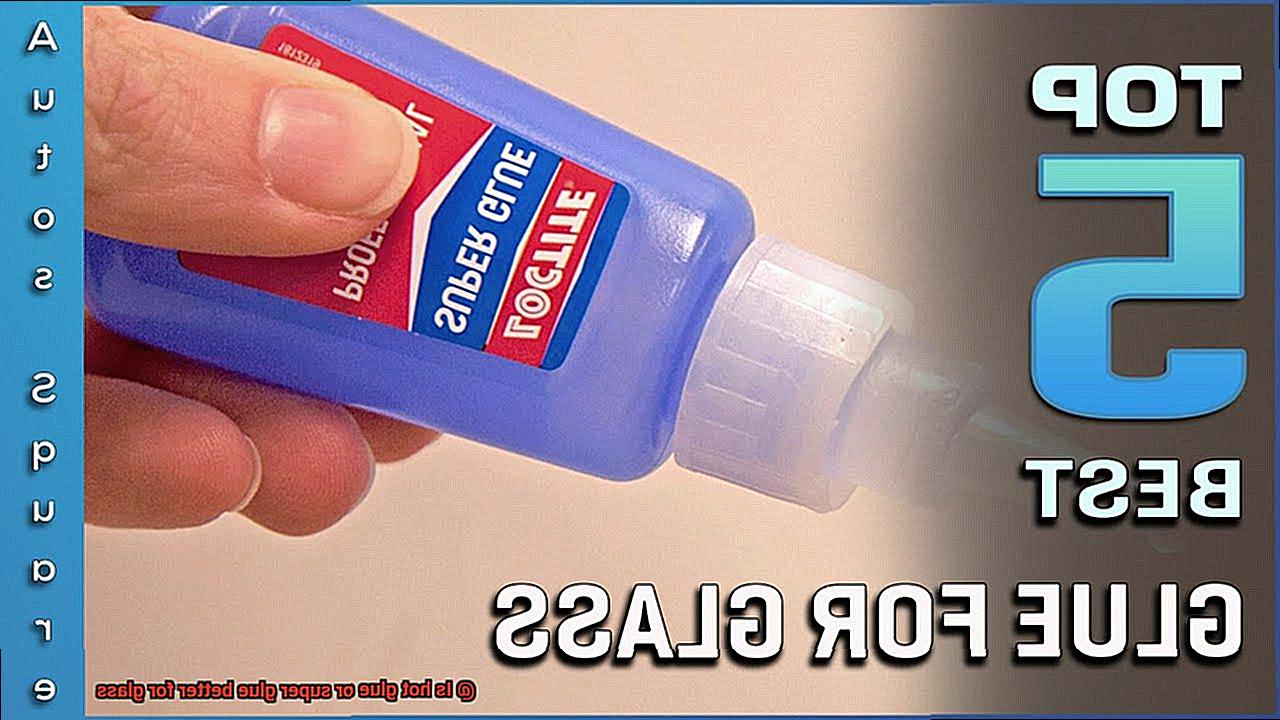
Step 5: Clean up excess glue
If any excess glue oozes out from between the surfaces, don’t fret. Simply remove it using a cotton swab or a clean cloth dampened with acetone. Be cautious when using acetone, as it can damage certain types of glass. Take your time and clean up any mess carefully.
Step 6: Allow time for curing
Super glue needs time to fully cure and form a strong bond. Typically, this takes around 24 hours. During this time, keep the glued object stable and in a level position. Avoid moving or disturbing the glued parts to ensure a secure bond.
Step 7: Enjoy your bonded glass
Once the super glue has fully cured, you’ll have a strong and durable bond that can resist moisture and temperature changes. Admire your handiwork and enjoy the benefits of a successfully bonded glass surface.
Remember, not all types of glass are suitable for bonding with super glue. Some may require specialized adhesives designed specifically for glass bonding. If you’re unsure, check the manufacturer’s instructions or consult a professional for guidance.
IdKK6z7VE-c” >
Conclusion
In the battle of hot glue versus super glue for glass bonding, both contenders have proven their worth. Hot glue emerges as a versatile champion, offering quick bonding with a transparent and flexible hold. Its availability and ability to bond various materials make it a go-to adhesive for many projects. However, beware its Achilles’ heel: hot glue may falter under heavy loads or constant stress, melt under scorching temperatures, and leave an unsightly cloudiness on glass surfaces.
On the other side of the ring stands super glue, boasting exceptional strength and lightning-fast drying time. This adhesive is no one-trick pony – it excels in bonding glass and other materials while maintaining transparency even after drying. With resistance to moisture and heat, super glue proves itself as a durable contender with a long shelf life. But like any warrior, it has its weaknesses: over time, super glue can become brittle and may not be suitable for larger or heavier glass objects. Exercise caution when handling this fast-drying powerhouse.
Ultimately, the choice between hot glue and super glue for glass bonding lies in the hands of your project’s specific requirements. Consider factors such as load-bearing capacity, exposure to temperature extremes, flexibility needs, aesthetic preferences, and ease of application when making your decision. And remember to follow the recommended steps for successful use of either adhesive on your prized glass surfaces.

